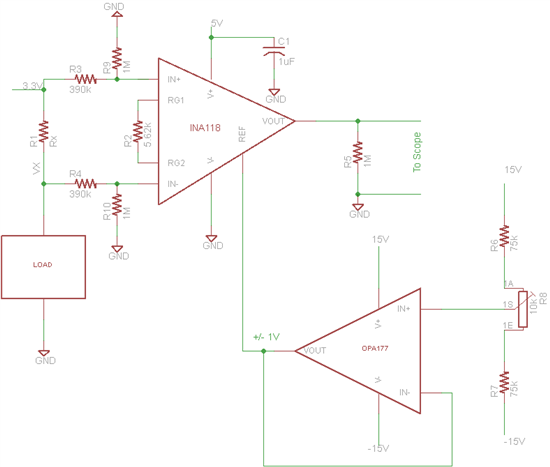Hi,
I am trying to measure the current on high side using a shunt resistance. During certain stages, the voltage across the shunt resistance could go as low as 60uV. So, I chose the INA118. The gain I have set is 10.
The problem that I am having now is that when Vin+ = Vin-, the output voltage that I am seeing is 40mV. Hence, I am unable to view any input signal when Vin+ -Vin- < 4mV. I am going to try and do the offset trimming suggested in the datasheet. I already tried connecting a DC power supply at the REF pin and found no change. Am I doing something terribly wrong?
Thanks in advance.


